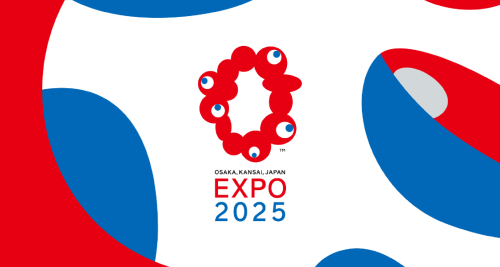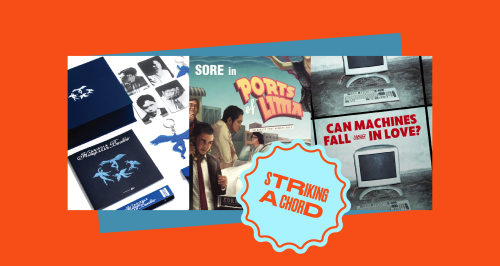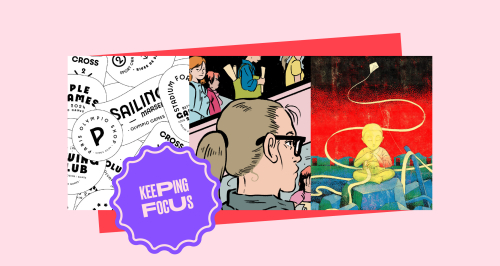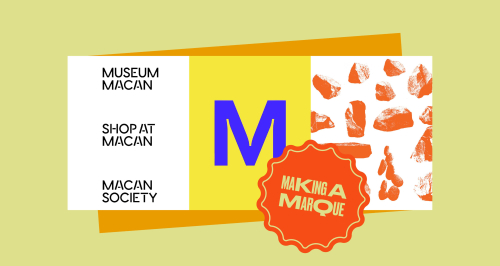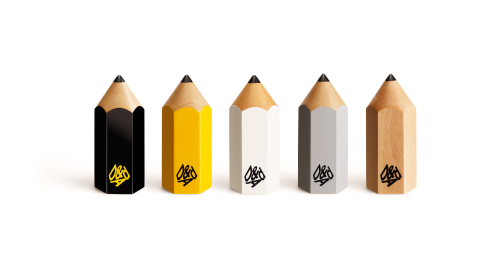The Economy of Taste: Young Design Studios and the Fluidities of Graphic Design
Preface: This essay is not intended to produce a singular narrative that defines the overarching conditions of graphic design across Indonesia. Instead, it looks at four young design studios– Copyright/Reserved, Gema Semesta Co., Projek AGNI and Sprint Phase– to unveil the sensibilities that have shaped their practices of design
Across different areas in Indonesia, a liminality threads the contemporary landscapes of graphic design. The field unfolds as both an experiment and a process, unbound by fixed patterns or strict rules. This fluidity of its condition has been readily embraced by young design studios, who root their practices in their cultivation of taste. In this context, taste stretches beyond the utilitarian function of design, as it merges technical precision with artistry, and weaves practical demands with artistic sensibility. Ultimately, we can understand taste as an amalgamation of many things for different designers: it tethers between their individual relationship to aesthetics, a collective identity, a private endeavour or a public entity – articulating their relationships to design as a concept, a craft and a practice. Their work, then, is centred on harnessing 'this' taste and moulding it to align with the ‘external’ demands of their clients and audiences alike. Here, we can begin to understand taste as a language: constantly materialised through each studio’s practices in design.
Taste as a Personal Sensibility
According to Gema Semesta of gemasemesta.co and Nikolas Artha of Sprint Phase, taste emerges organically from personal practice. Though rooted in their individual sensibilities, its expression continually shifts – adjusting to the contexts of their projects – and shapes their signature style. Over the course of their careers, their intuition for design expands beyond themselves and grows into the character of their studios. When asked about their studio’s formation, both Gema and Nikolas expressed their reliance on the natural course of its design; relying on the unfolding of their individual aesthetics and design styles.
For Gema, the process of refining his practice was “careful and slow”, growing in line with the development of his own brand. He remarked that his career (as a graphic designer and creative director) has spanned over the course of 12 years, which culminated in the creation of gemasemesta.co. “It was initially a domain handle for my portfolio,” he remarked about the beginnings of gemasemesta.co. “And as I was able to get more people in, it gradually grew to become how it is today.”
Gema rooted his taste in a purist relationship to design, remarking the essential task for every designer to understand the ‘basic principles’ of design – and to eventually break them. He encapsulates his design philosophy in a single sentence: “The hardest thing to do is to design simply, and to treat each element accordingly,” he says as he walks us through gemasemesta.co’s Instagram feed, referencing Ahmad Djuhara (1996-2020) and Taman Bintang Samudra publications as well as the design of PROSES’ exhibition and visual identity. There is a clear thread that continuously roots his practice, translated into the restrained play with space, hand-drawn elements, and a bare-boned, minimalist palette: “I don’t want to manipulate much (in my design),” he explains. “I want the typography to exist as it is, just as these iconographies or photographic elements stand on their own.”

According to Gema, the core function of his design is to add flair without frill, allowing for his taste to surface gently and seamlessly without altering or recontextualising a client’s character. He referenced one of his most recent projects with the Indonesian Heritage Agency as a successful case: “It still surprises me that they had chosen our logo, because it doesn’t adhere to the template-governmental approach, and throughout the process of its design, we were mindful of that and so, we wanted to make the logo representative of both the government body and for the greater public,” He remarks that it is important for his style to follow the ambitions of each project: “I cannot be selfish in my design, and I do not want to move out of a place of ego. It’s important to truly understand your client – their ambition, their character — and identify what they need so that you, as a graphic designer, can fulfill them.”
His openness extends beyond his client approach, shaping the way he adapts to the different capacities and characters of his team members. He says that he doesn’t place any expectations for his team to have a similarity in approach, and he embraces their differences as virtue: “I feel the energy of everyone in the studio – it is expansive, and it brings me joy to work alongside them whilst nurturing each person’s potential,” Design takes shape through the synchronicities, guided by an understanding that surpasses language: “It is hard to pinpoint your studio’s character; I know I am unable to fully comprehend it as much as my members do.” For Gema and his team at gemasemesta.co, the process of design is ultimately guided by intuition, as they work according-and-adjusting to each other’s rhythms. Collaboration, then, becomes engrained into their systems, allowing for everyone to work according to their ‘specialties’: “I don’t often enjoy working alone and I strive for a collaborative way of working through the embrace of a cross-discipline approach. So, if my specialty is graphic design, I want to work closely with a photographer or a type-specialist to produce a work that is truly representative of our expertise. I want us to do our part and I believe this births a successful collaboration.”
The versatility of gemasemesta.co’s style is evident in the breadth of his portfolio, which spans clients as varied from beauty and design brands such as Raine Beauty and Rajnik, technology brand OPPO as well as other exhibition designs for Dip. -Ing Arsitek and Indonesia Bertutur.

Nikolas, on the other hand, explained that Sprint Phase was conceived as a collaborative platform for him and his close friends – many of whom remain his frequent collaborators – to find and create work together. The studio operates in tandem with a restaurant called ‘FED. by Made’, which Nikolas also leads. This hybrid of design studio and restaurant, loosely inspired by Brain Dead and several European studios, has positioned him as (one of, if not) the first in Indonesia to work within such a format. The overlap of these two entities are so pronounced that it occasionally produces moments of irony: “In Sprint Phase, we’ve had someone approach us and they put FED. in their mood board, and said that they wanted to do their designs like FED, without knowing that I actually run it!”
Nikolas’ design taste is rooted in his background in photography, which grounds his image-based experimentation: “I like image-based treatments, I always work from an image and because I studied photography, I always had that in the back of my mind.” His references range from rap music videos, and skating documentaries and vintage horror films, carving out a distinctive approach to aesthetics. His early interests in printing and scanning became exercises of “messing around with how an image should look”, a process that evolved into his pursuit of an “imperfect, perfect look”. As he explains: “In most of my photography or visual treatments, I love messing around with how the image should look: inverting things, playing around with X-rays, and changing opacity blends. I always strived to create a stark contrast.” This photographic ontology now forms the baseline of his design practices, informing Sprint Phase’s growing aesthetic across projects such as the branding of Merrell 1TRL, Uluwatu Surf Villas and music-related outputs such as Erykah Badu and Hybrid Man Japan Tour.
“Ultimately, contrast is deeply embedded into my design taste.” Nikolas reflects. This emphasis on contrast lends his portfolio a contemporary edge, resonating with the ‘new wave’ and ‘subcultural’ aesthetics of streetwear. For Nikolas, it is this personalisation of difference that anchors his ambition for design: “I like different and I think different is what we should strive for.” Perhaps this ethos is mostly visible throughout Nikolas’ playful, image-driven approach in FED. photoshoots and promotional skits, to which we see different FED. members elegantly causing mishap around the island or battling each other in a football tournament. Speaking about an upcoming project, he laughs: “Next Sunday, we’re doing a photoshoot with a rental hire speaker thing. I don’t want a cliche, white backdrop shoot!”
For Nikolas, difference is not only aesthetic, but also ethical, guiding how Sprint Phase selects its projects and clients: “I want to make something timeless, something that you can always return to again and again. I think that is where my design goal is. Throughout the projects that we do, I always ask myself: how do we make it everlasting and not just a trend?” He underscores that this pursuit requires shared values: “There were a few cases where we’ve had to reject a client because they didn’t align with us. For instance, a company once approached us, but we said no because we didn’t want to contribute to the displacement from all these development initiatives in Bali.”
Perhaps alignment requires negotiation in Sprint Phase’s external relations, but for Nikolas, it has become a quality made effortless by those around him at Sprint Phase and FED: “Everything (and everyone) is integrated into one. I don’t even think we can call this a collaboration, it’s deeper than that, and it is a whole other thing where everything just feeds into each other.” Trust runs deep between the teams, with a natural convergence of tastes. Even his business partner and chef, Made, has occasionally led campaigns. Sustained by this synergy, Nikolas understands they move together as a continuous work in progress, operating within a cohesive visual language defined as much by process as by outcome: “We want to show the work that we’re proud of, and the processes of how we work too. I guess we are accidentally purposeful design!”
In conclusion, Gema and Nikolas demonstrate how taste can bloom into the connective tissue that unifies diverse contexts, collaborators, and client demands. What began as an intuitive pursuit of personal expression gradually surfaces an ever-evolving aesthetic, one that anchors their practice while remaining open to change. Their studios reveal that intuition can serve as the foundation for an ecosystem – one that articulates their own voices while creating space for individual and collective sensibilities to grow.

Taste as a Transformative Sensibility
Taste doesn’t necessarily concern itself with tangibility; it can also emerge as an abstraction of craft. For Putri Larasati Ayu and Hilmy P. Soepadmo of Copyright/Reserved, this abstraction is grounded in their Fine Arts background, where they developed an ontological understanding of taste and learned to materialise it in relation to context. As they reflected: “In art, you cannot create on the basis of commerce. We gravitated towards graphic design because design allows us to create for commercial purposes – as the field was intended to be. When we graduated school, we just slowly began to build our portfolio and with every project, we formed the foundation/guiding principles of our practice in (graphic) design.”
This gradual process led to the formal establishment of Copyright/Reserved, which they described as an “experimental” design studio – a name that reflects their commitment to an ongoing process of refinement.
When pressed to define a specific (design) style, Putri and Hilmy admitted that they resist such categorisation. Early on, they reluctantly referred to their work as “Brutalist or Swiss Minimalist” – labels that they adopted mostly to satisfy a clients’ demands for definition. In reality, much of their practice stemmed from Hilmy’s background in art, which naturally informed the studios’ visual approach. Over time, they prefer to continuously abandon these fixed associations, in favour of what they call as “just doing whatever we like.” This shift towards openness has enabled them to approach each project as an experiment, allowing taste to remain fluid and responsive.
This freedom has resulted in a body of work that spans a wide spectrum: from consumer goods such as Portee Goods and Beau Bakery, to artist-driven projects with Reality Club and Vidi Aldiano. Yet, despite the diversity of their output, Putri and Hilmy emphasise that the most important factor in choosing collaborators is a shared sense of values: “We always hope to meet clients who are original in their approach, and are willing to be brave in their brands, concepts, and projects. We understand that the client has taste, but from here, Copyright/Reserved comes in to help them refine themselves and so, part of our work is to consult and educate the client.”
For them, taste becomes a dialogue rather than a prescription. Each collaboration begins with research to uncover the reasoning that will ground the design direction. As they explain: “We see design as the development of a rationale or a reasoning. If you solely focus on artistry, then no longer becomes design. With that being said, you cannot rely on just graphic design to save your project! There must be time taken to research and understand the full extent of what the brand needs, and then, the visual concept and system can emerge from that.”

If the studio’s client-facing work is defined by structure and purpose, Copyright/Reserved grants itself an outlet for freedom through its in-house publishing platform, Extensive Publishing. Conceived as a space for experimentation, collaboration and play, the initiative emerges as a counterbalance to the agency and marketing demands of their main practice. “We actually created this as a space for collaboration and expression when we get tired of the agency-related and marketing parts of our work!” Hilmy laughed. What began as a casual experiment grew into a more ambitious undertaking, producing modular zines that not only gave the team creative freedom but also welcomed contributions from non-design members.
“We wanted to experiment with the format of a “publication” to give space for people to see us beyond our commercial work, whilst also to give the entire team the creative freedom and even involving the non-design members of our team and see what they can create.” Over time, this “fun project” gained enough momentum to bring them to book fairs across Southeast Asia and beyond.
For Putri and Hilmy, then, taste is less a fixed aesthetic than an evolving process of negotiation between: art and commerce, discipline and freedom, clients and collaborators. In balancing these dualities, Copyright/Reserved shows how taste, when treated as a living process, can both anchor a practice and continually free it.

Taste Rooted in Langgam Sensibility
Unlike the more individually-rooted practices of the other studios, Projek AGNI grounds its design philosophy in a shared Langgam (or loosely translated as a Shared Character) called Neo-Indonesiana. Defined as “an embodiment of the rich lineage of Nusantara Art and Culture in a contemporary context, designed for the (future) preservation of identity”, this framework provides the studio with a guiding thread that aligns the subjectivities of its members. Their portfolio reads as a celebration of Indonesian culture, drawing from vernacular elements and philosophies while adapting them to the demands and contexts of contemporary design.
Bima Saprilla and Jasmine Kane described their process as one where every project carries its own character, shaped by research and contextual sensitivity. Jasmine particularly remarked that the team approached design not to solely focus on its “end goal”, but to embrace the holistic process; describing it as a valuation of its keniscayaan, where every part is essential in its own right. For Kasuari’s souvenir collection, the team conducted extensive desk research to distill the pillars of Papuan culture: “We were strongly inspired by the character of Papuan ornaments, but also the rich nature of Papua. You can see that we referenced the flora and fauna that are native to the region,” Bima explained. For more hospitality-driven projects such as Ambarrukmo’s content strategy and Sēla’s branding, the team wove in philosophy: positioning themselves as travellers to craft an itinerary that evoked Javanese wonder for Ambarrukmo, and drawing on the Balinese principle of Tri Hita Karana to guide the emphasis of breath-space in Sēla’s spatial and visual design.
Although their practice remains anchored in an appreciation for cultural heritage and a drive to make it accessible, Projek AGNI is increasingly moving toward a freer, more exploratory approach. Jasmine noted: “We’ve always rooted ourselves in a sense of nostalgia for the culture, and we would like to move away and pull it back to the (contemporary) context.” When asked if this shift meant leaving Neo-Indonesiana behind, both she and Bima affirmed otherwise: “We are always Neo-Indonesiana. We’re just moving from a more natural and organic sense to renew our relationship to culture. At the moment, the team (and I) are dispersed across different parts of Indonesia, and it has given us new ways of seeing, and we’re just letting ourselves play with that.”
This spirit of play has recently become more tangible through their recently announced project called PAS Warung & Café, where Projek AGNI embraced a lighter, more experimental Neo-Indonesiana. Inspired by the everyday accessibility of culture, they designed playful logotypes, merchandise featuring jajan pasar, and brightly coloured gradients – signalling a turn from refined nostalgia toward the immediacy of lived, everyday culture. As Jasmine teased, the team is also exploring play conceptually, inspired by children’s drawings and their sense of freedom.
Collaboration, too, extends beyond client work into artistic experiments within the studio itself. “We actually share a couple of songs and make playlists together. We would also really like to make a book at some point,” Bima and Jasmine shared. Books and music references circulate among the team, sparking conversations and opening new directions for research-based design. Jasmine added that she hopes to see Projek AGNI publish a book that documents how the team is immersing themselves in present-day contexts or a play on their archives.
Through Projek AGNI, taste is reframed as a collective practice – one shaped by their drive to preserve, evolve, appreciate and reimagine culture. Their trajectory suggests that Neo-Indonesiana is not a static framework but a living practice, constantly reshaped through play, context, and collaboration.
Closing
What becomes clear is that taste cannot be pinned down to a single form, school, or system. Instead, it is a living entity that moves between the individual and the collective, tradition and experimentation, utility and artistry; constantly adjusting to the rhythms of graphic design. In the hands of these young studios, taste becomes more than a marker of character, but it is embedded into the relations that have shaped their design. Now, we begin to understand graphic design in Indonesia as not just about arriving at a definition, but an exercise of experimentation. Perhaps design, after all, is not meant to be defined, but embodied in its continuous fluidity.

